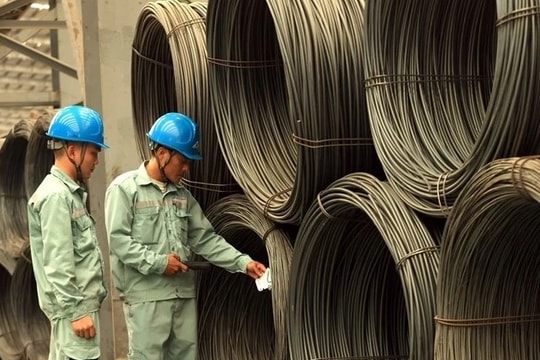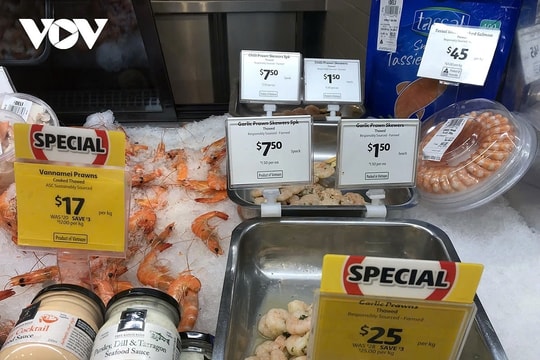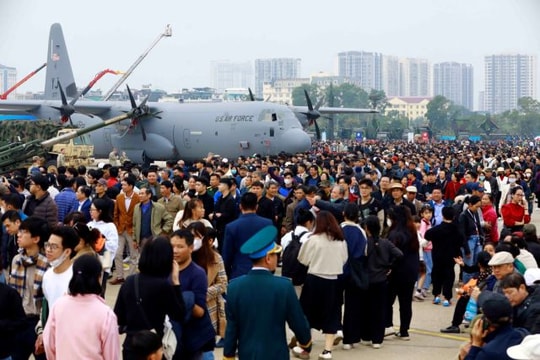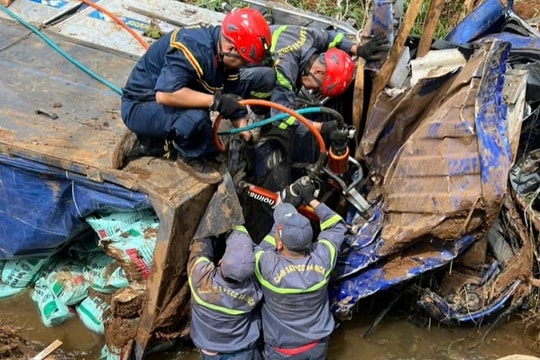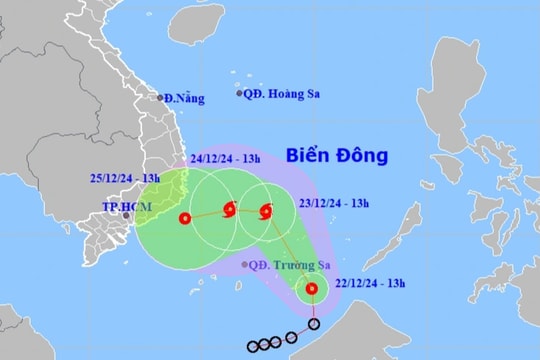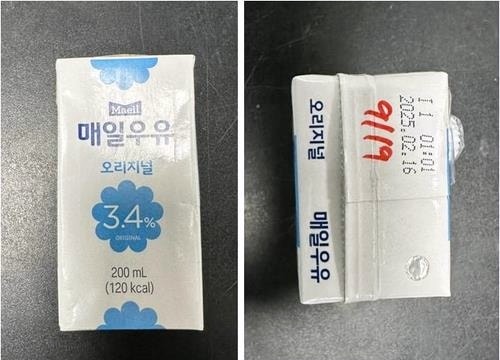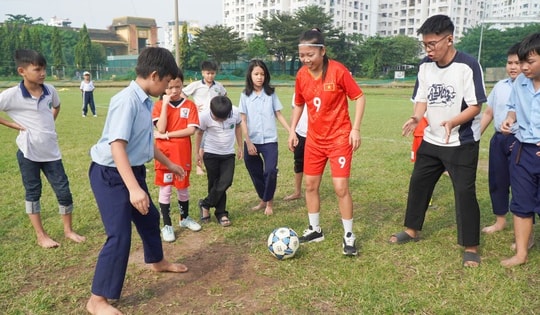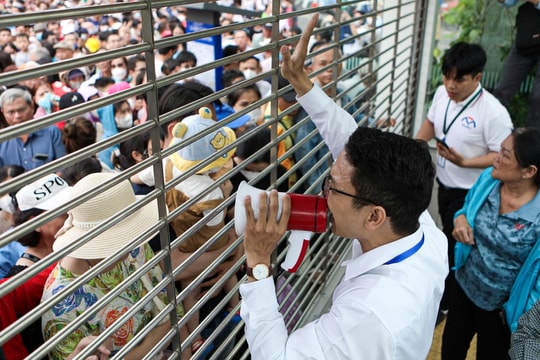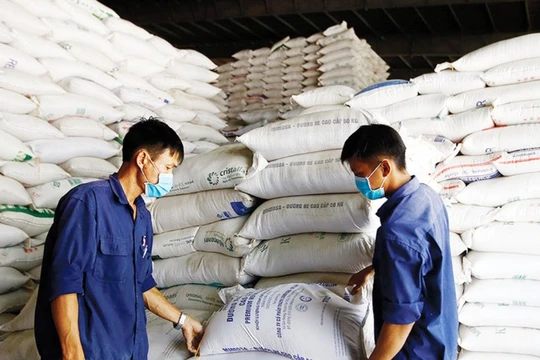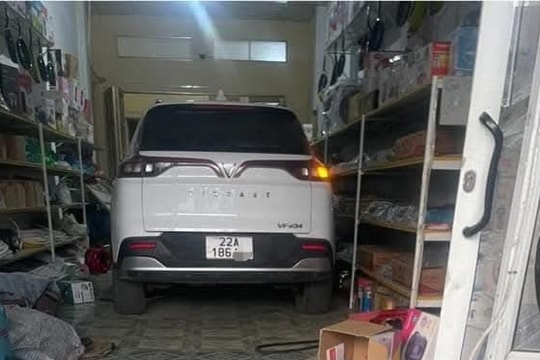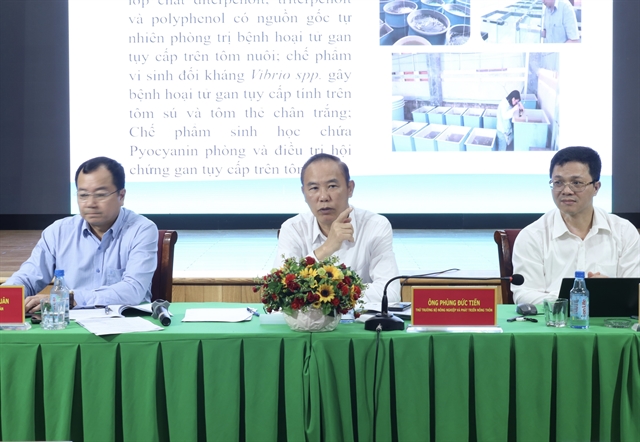 |
| Phùng Đức Tiến, Deputy Minister of Agriculture and Rural Development (centre), chairs the conference. — VNA/VNS Photo Xuân Anh |
HCM CITY — Unfavourable environmental developments and weather conditions, combined with recent epidemics, have wreaked havoc on the aquaculture industry.
The agricultural sector and local authorities therefore need to work together and proactively develop effective prevention and control plans to minimise economic losses and ensure the quality and supply of aquatic products for consumption and export.
This was the topic under discussion by experts at the Conference on Aquatic Disease Prevention and Control 2024 and Plan for 2025, organised by the Ministry of Agriculture and Rural Development in HCM City on Thursday.
Phan Quang Minh, Deputy Director of the Department of Animal Health (DoAH), said that, according to reports from localities, good results in preventing aquatic diseases were achieved in the first nine months of the year.
The area of aquaculture affected by disease was reported to be 4,257ha, down 28.94 per cent compared to the same period last year.
In particular, the shrimp farming area affected by disease was just 3,593ha, down 34.97 per cent.
However, the aquaculture area damaged by climate change and natural disasters like typhoons, flooding, droughts, saltwater intrusion and environmental pollution was reported at 17,316ha, along with 3,936 ponds, cages and rafts, accounting for over 80 per cent of the aquaculture total damage.
Minh said that while shrimp diseases have decreased, the area of damage caused by climate change and environmental factors has increased sharply -- by around 20 per cent compared to last year.
Some dangerous pathogens in shrimp are still circulating in many farming areas. Diseases, combined with stress caused by high temperatures, salinity and other extreme environmental changes, affect shrimp health, causing slow growth and weakened resistance.
Farmed shrimp mainly suffer from diseases such as white spot, acute hepatopancreatic necrosis, white feces, stunting and microsporidia.
Diseases occur mainly in key shrimp farming provinces like Trà Vinh, Sóc Trăng, Cà Mau, Bạc Liêu and Kiên Giang.
Meanwhile, tra fish mainly suffer from liver, kidney and hemorrhagic diseases.
These diseases occur mostly in An Giang, Đồng Tháp and Vĩnh Long provinces.
Compared to last year, disease outbreaks in tra fish have decreased in scope.
Tra fish are raised in ponds and rafts using natural river water, making it very difficult to control the aquatic environment.
In addition, the high population density of the fish poses a constant risk of disease outbreaks.
The DoAH stated that disease prevention efforts need to be strengthened, especially surveillance programmes for early detection and training workers to handle diseases starting at the breeding and pond preparation stages to avoid the spread of diseases.
Regarding production and farming results in the first nine months of the year, Ngô Thế Anh, Head of the Aquaculture Division under the Department of Fisheries, said that aquaculture product output reached nearly 4 million tonnes, an increase of four per cent over the same period last year.
However, Typhoon Yagi, which hit the northern provinces in September, directly affected about 33,000ha and 15,000 cages of aquaculture. The typhoon caused a loss of up to 50,000 tonnes of all kinds of aquatic products, with estimated economic damages of around VNĐ6 trillion (US$241.8 million).
Immediately after the typhoon, the aquaculture industry focused on restoring production, identifying the needs of each locality to recover, prepare infrastructure and ensure an environment conducive to aquatic animals' reproduction.
The industry is focusing on the quality of aquatic breeds and materials as well as ensuring food safety to meet market requirements.
Phùng Đức Tiến, Deputy Minister of Agriculture and Rural Development, said that disease prevention has achieved positive results, as the area of infected aquaculture has decreased compared to last year.
But he noted that localities must be vigilant when aquaculture diseases appear, as they can spread quickly and cause severe damage.
Tiến asked aquaculture facilities to prioritise biosafety farming areas, strictly comply with disinfection and sanitation processes, and treat water sources before and after farming.
It is also necessary to choose breeds with clear origins that have been quarantined and maintain high resistance to disease, he added.
Local authorities need to support farmers in technical processes and warn them about environmental factors that can affect the health of aquatic animals.
On the other hand, border provinces need to control the illegal import of aquatic products, especially shrimp breeds, to prevent pathogens from entering and causing epidemics. — VNS





